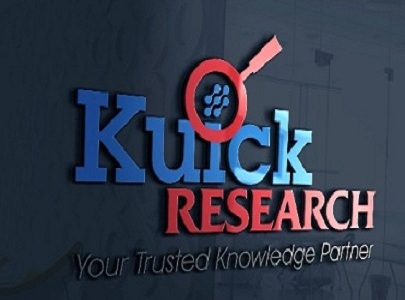
Global DLL3 Targeted Therapies Market Opportunities and Clinical Trials Insight 2024 Report Finding and Highlights:
In recent years, the discovery of Delta Like Ligand 3 (DLL3) as a therapeutic cancer target has emerged as key defining moment in the targeted therapy landscape. Understanding DLL3’s role and pathways in both non cancer and cancer scenarios has shed light on its potential as a groundbreaking treatment option. DLL3, a transmembrane protein previously known for its role in non-cancerous cellular processes, has emerged as a promising cancer treatment target due to its overexpression in a variety of malignancies, particularly neuroendocrine cancers such as small-cell lung cancer, bladder cancer, and gastroenteropancreatic tumors.
Stemcentrx, now a subsidiary of AbbVie, led the development of Rovalpituzumab tesirine (Rova-T), which was a pioneering endeavor in the field of DLL3 targeted therapies. Rova-T, an antibody-drug combination containing a DLL3-targeting antibody coupled to a cytotoxic chemical, was designed to take advantage of the specific overexpression of DLL3 in cancer cells. Despite initial enthusiasm, the cessation of Rova-T in later-phase clinical trials due to negative results presented both challenges and lessons.
Despite being discontinued in later stage clinical studies, Rova-T has left an indelible mark on the landscape of DLL3 targeted therapeutics, acting as a catalyst for the discovery and development of novel pharmacological classes. Following Rova-T’s journey, its legacy lives on with Rovalpituzumab being the primary antibody component in a variety of antibody-drug conjugates, indicating a paradigm change in cancer therapy. These conjugates, which carry a variety of payloads such as radionuclides, photoabsorbers, and photosensitizers, have emerged as viable candidates in ongoing scientific research and clinical trials.
By combining Rova-T’s DLL3-targeting antibody Rovalpituzumab into these innovative conjugates, scientists have leveraged the potential of diverse payloads to enhance the precision and efficacy of cancer treatment. Incorporating radionuclides, providing tailored radiation therapy, and using photoabsorbers and photosensitizers for photodynamic therapy are all exciting options that have shown great promise in preclinical and early clinical trials.
The dynamic evolution of DLL3 targeted therapies is characterized by a wide range of candidates in clinical trials, extending far beyond Rovalpituzumab conjugates. The current landscape encompasses a wide range of novel approaches, from bispecific and trispecific antibodies to cutting-edge cell therapies like CAR T and CAR NK cell therapies. While many of these candidates are still in early stages of development, significant exceptions, like as Amgen’s Tarlatamab, have advanced to phase 3 trials. Tarlatamab’s advancement to this pivotal stage not only reflects the accelerated pace of research in DLL3 targeted therapies, but also establishes a significant benchmark for the field, indicating a critical step toward the potential translation of these novel therapeutic modalities from experimental concepts to clinically validated treatments.
Tarlatamab has reached key milestones on its extraordinary path, first receiving orphan drug designation for small cell lung cancer (SCLC) in 2018 and then breakthrough therapy designation in October 2023. These accolades highlight its potential as a novel therapeutic approach for a cancer with few treatment alternatives. More recently, in December 2023, it was granted the FDA Priority Review; the FDA Target Action Date for Tarlatamab is June 12, 2024, putting this innovative therapy on the verge of making history as the first BiTEandreg; (bispecific T cell engager) therapy for a major solid tumor and potentially clinching the coveted title of the first FDA-approved DLL3 targeted therapy.
The culmination of these designations and impending regulatory decisions not only demonstrates Tarlatamab’s clinical promise, but also emphasizes its critical role in shaping the future landscape of cancer treatment, particularly in the context of DLL3 targeted therapies, as it approaches potential approval and clinical integration.
Several major pharmaceutical companies, including Roche (via Chugai Pharmaceutical), Boehringer Ingelheim, and Novartis, are actively working on DLL3 targeted therapies, demonstrating the significant interest and potential in this therapeutic area. Partnerships and license agreements highlight the field’s collaborative character, with significant examples include the current collaboration between Boehringer Ingelheim and Oxford BioTherapeutics, as well as newer collaborations with Novartis and Legend, MediLink Therapeutics, and Zai Lab.
The DLL3 targeted therapeutic market is rapidly evolving, with Tarlatamab at the forefront. Growth is being driven by a better knowledge of the role of DLL3 in cancer, ongoing research and development initiatives, and strategic partnerships that promote innovation. The future contains enormous possibilities and prospects for stakeholders in this sector, including the promise of novel therapy modalities, improved patient outcomes, and a transformative impact on the cancer treatment landscape. As the development of DLL3 targeted therapies progresses, it becomes obvious that collaboration, ingenuity, and tenacity will continue to influence the future of cancer therapies domain.
DLL3 Targeted Therapies dll3 cancer therapies dll3 protien dll3 cancer drugs Delta like ligand 3 DLL3 gene dll3 expression dll3 amgen DLL3 inhibitor DLL3 clinical trials tarlatamab clinical trial tarlatamab phase 3 amg 757 clinical trial tarlatamab dll3 tarlatamab fda approval tarlatamab phase 2 tarlatamab side effects DLL3 gene dll3 amgen dll3 structure dll3 cancer dll3 expression DLL3 protein expression dll3 antibody dll3 inhibitor dll3 protein dll3 notch dll3 neuroendocrine DLL3-Targeting Agents DLL3/CD3e tri-specific T-cell activating DLL3/CD3 T-cell engager Recombinant Human DLL3 Protein DLL3 regulates Notch signaling Targeting DLL3 Rovalpituzumab dll3 inhibitor dll3 lung cancer dll3 prostate cancer Dll3 antibody positive Dll3 antibody negative dll3 sclc Anti-DLL3 Antibody DLL3 Polyclonal Antibody DLL3 Recombinant Monoclonal Antibody